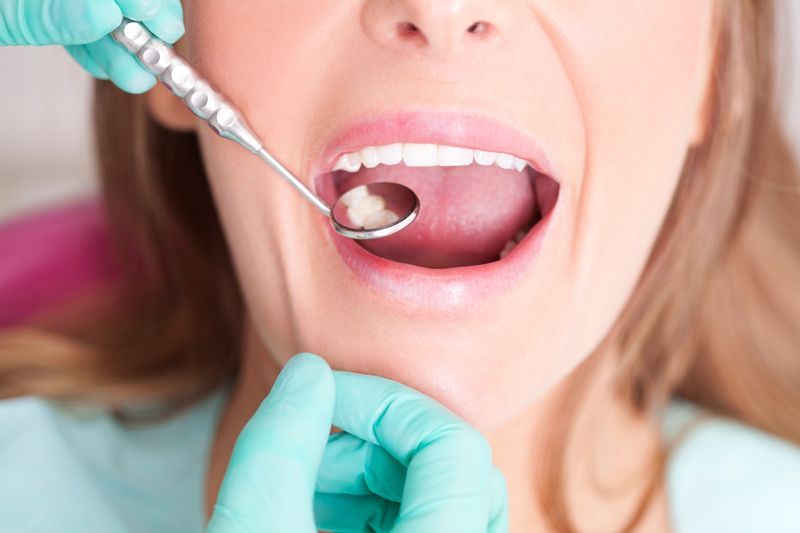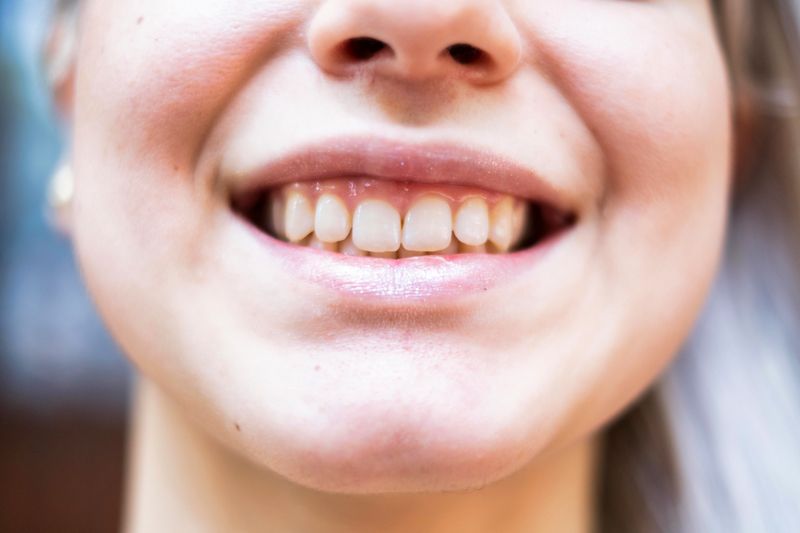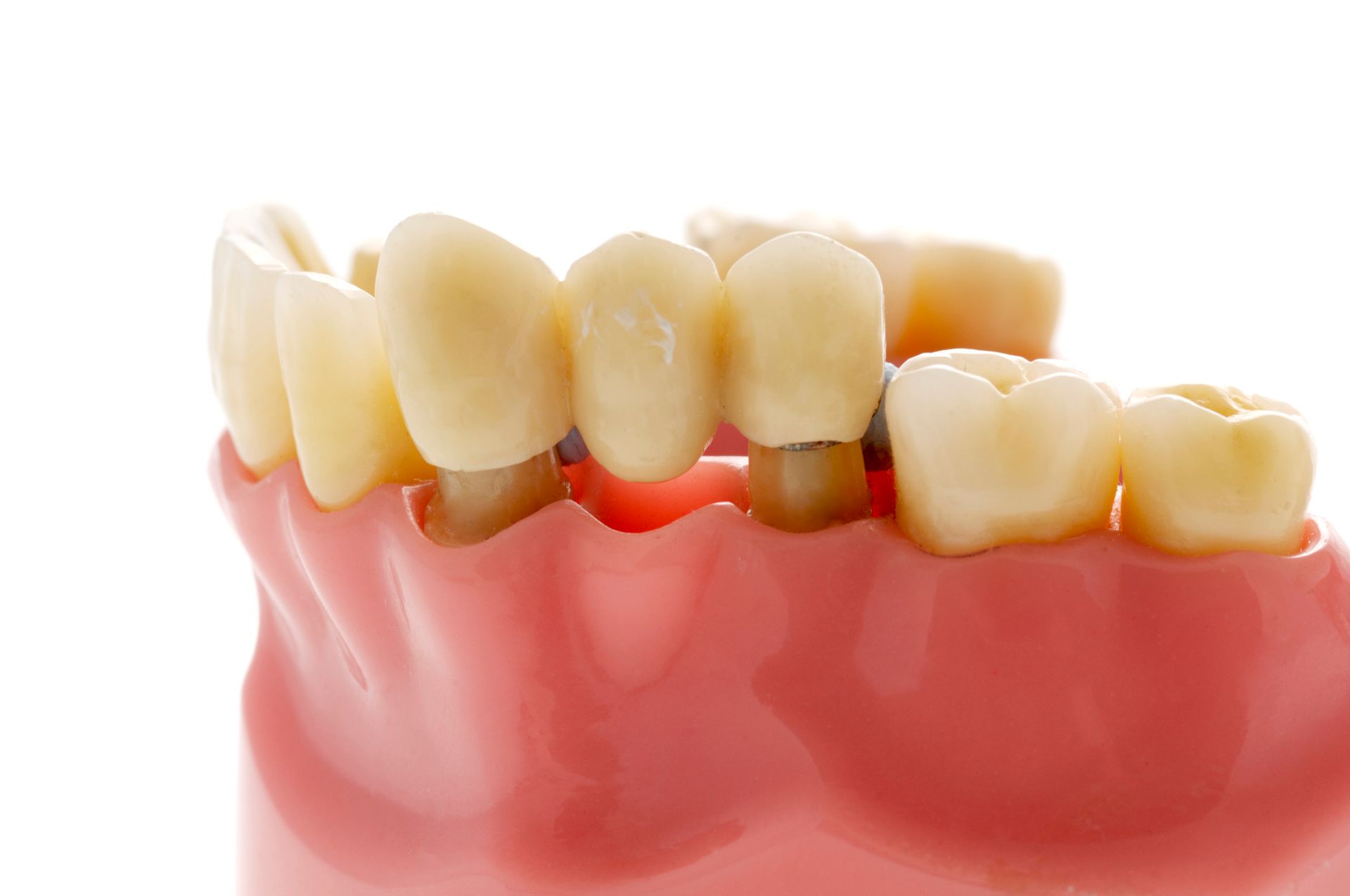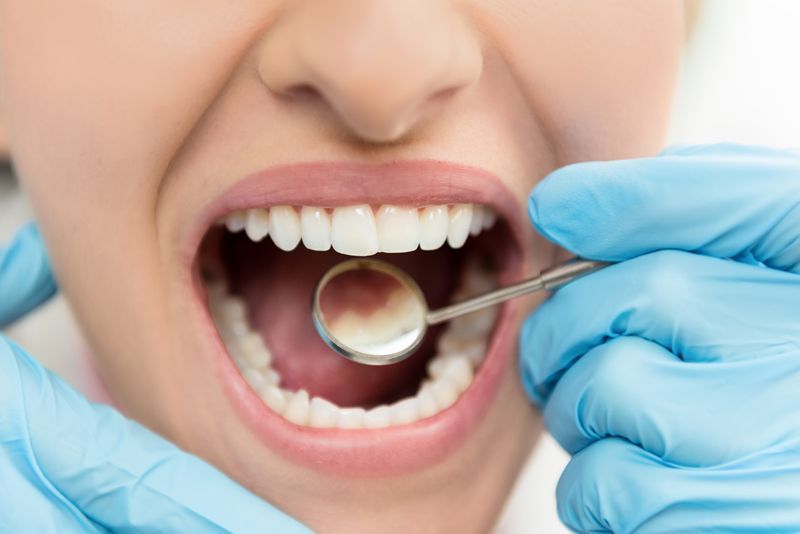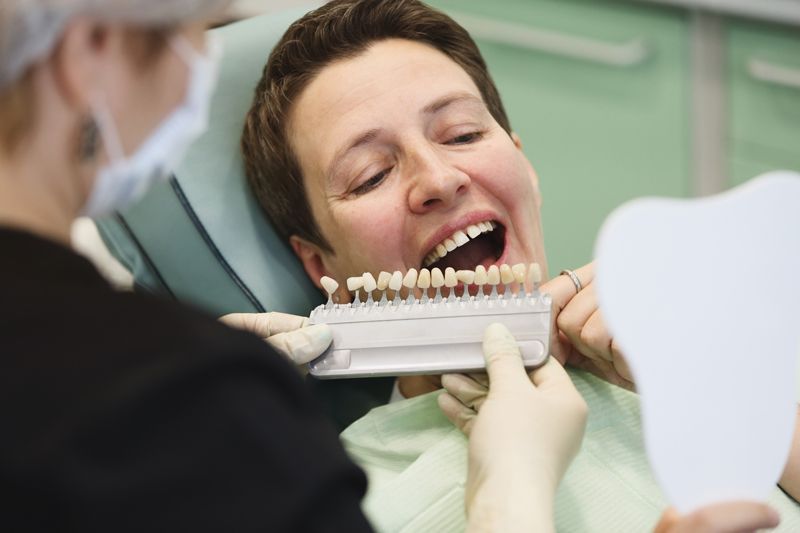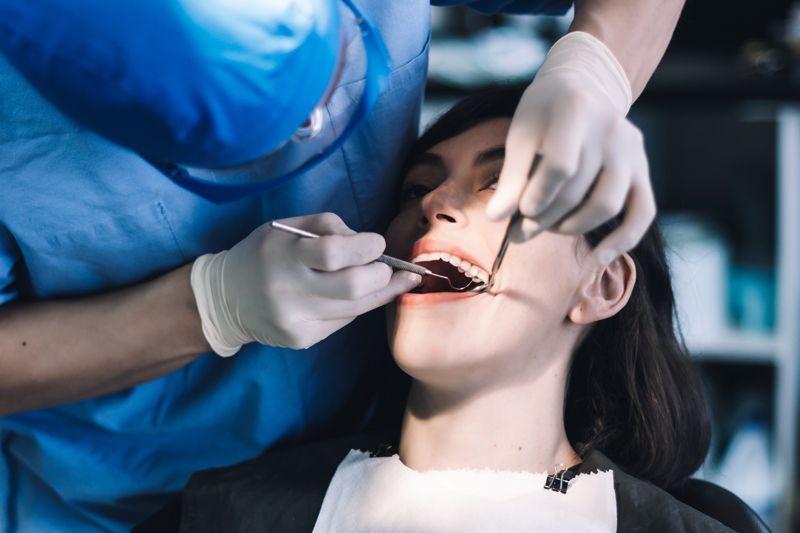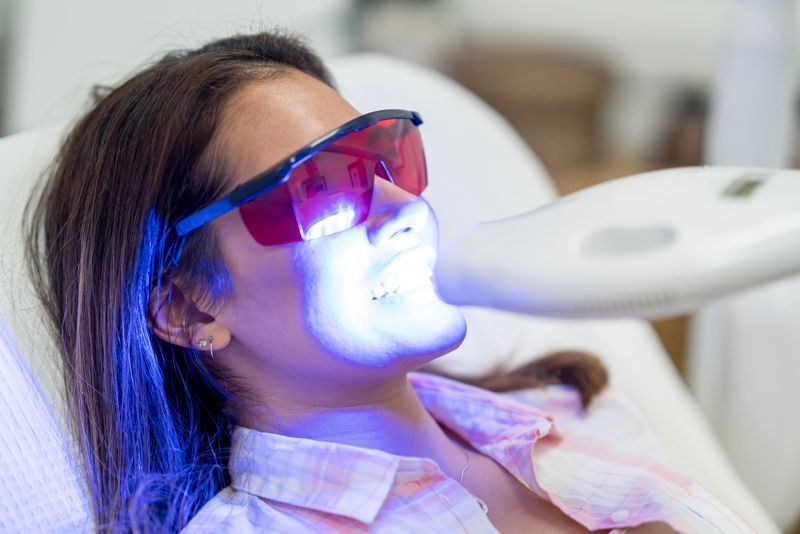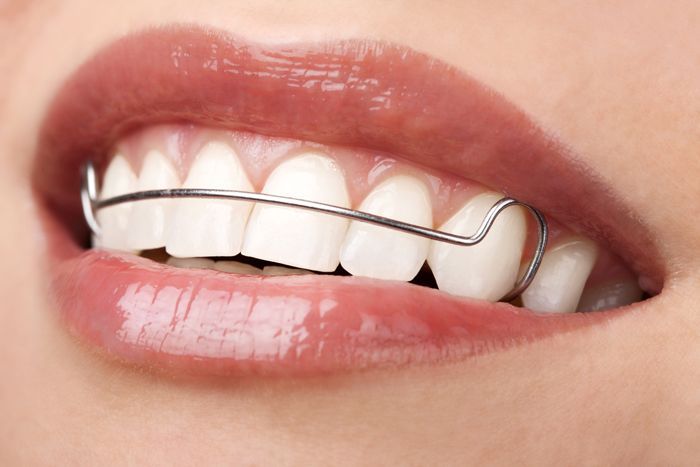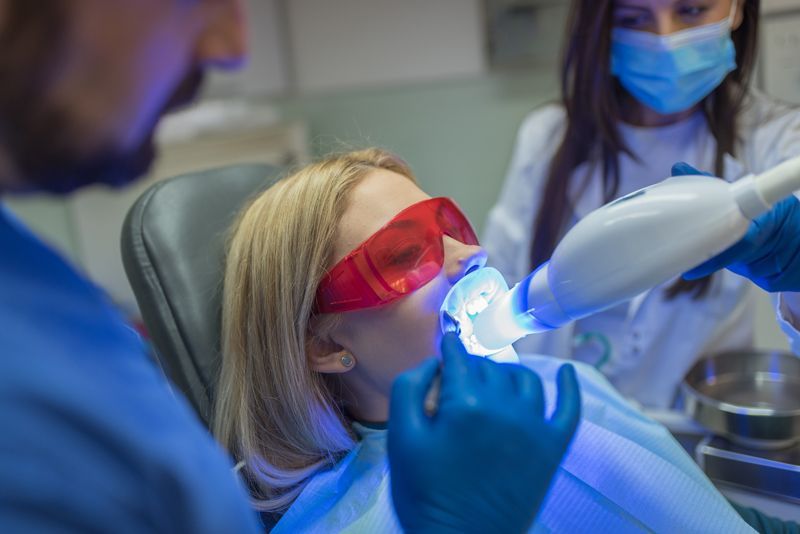Your Trusted Source for Complete Dental Care
Regular dental visits ensure that oral health issues, ranging from tooth decay to oral cancer, are identified and addressed promptly. At our practice, your oral health is our top priority. We are committed to ensuring your teeth remain healthy, function effectively, and appear appealing. We offer a comprehensive range of dental services, covering all your routine dental needs.
Orthodontics
Many seek orthodontic treatment primarily to achieve a healthy and aesthetically pleasing smile. If you've ever felt self-conscious about your smile, braces can make a significant difference in enhancing your appearance and boosting your self-esteem.
Once you finish your treatment, you will not only realize the smile you've always dreamt of, but you'll also gain the confidence to display it proudly. Our practice is unwavering in its dedication to ensuring that you feel comfortable and self-assured throughout your orthodontic journey. It is firmly committed to providing the high-quality care you rightfully deserve.
Orthodontic Treatment Process:
Orthodontic appliances exist in various materials, such as metal, ceramic, or plastic. These appliances, whether removable or fixed brackets bonded to your teeth, function by gently and precisely applying a controlled force, gradually realigning your teeth to their correct position.
The days of having a metal band with a bracket encircling each tooth are long gone. Nowadays, you can opt for either transparent or metallic frames and, in some cases, even choose the color of your appliance. The wires used are now less noticeable, and high-tech materials have to move your teeth more efficiently and with greater comfort. Age is no longer a limiting factor; braces can be advantageous for individuals of all age groups.
Duration of Treatment:
The duration of orthodontic treatment varies depending on several factors, such as age, treatment method, and the severity of your case. Treatment can range from one to three years. For children, receiving interceptive or early treatment can lead to a shorter treatment duration in the future. Your active participation and diligence are vital for successful treatment. The more engaged you are, the quicker and more effective your treatment will be.
Before commencing your orthodontic journey, your doctor will discuss all available options and estimate the expected treatment duration. Please don't hesitate to contact our practice to schedule an appointment and gain a deeper understanding of the orthodontic treatments we offer.
Types of Braces:
Traditional Metal Braces:
These are the most common types and are now more comfortable than ever. Made from high-grade stainless steel, they use metal brackets and archwires. You can even add colored elastics for a unique and vibrant smile.
Self-Ligating Braces:
Like traditional braces, self-ligating braces are more efficient and require fewer appointments. They utilize a specialized clip instead of elastics, reducing pressure on the teeth.
Clear (Ceramic) Braces:
These are less visible than metal braces, making them suitable for older teenagers and adults concerned about aesthetics. However, they require extra attention to oral hygiene.
Clear Aligners (Invisalign):
Clear aligners are invisible, removable trays that straighten your teeth comfortably. They allow you to eat and drink without restrictions and simplify oral care.
Gold Braces:
These are similar to traditional metal braces but have a gold coating, offering a cosmetic alternative with a comparable cost to clear braces.
Lingual Braces:
Lingual braces, which hide behind your teeth and match your tooth shape, offer an excellent option for various individuals, including athletes, actors, and musicians, as they remain entirely concealed when you smile.
Extractions
General Procedure
Restoration procedures like root canal therapy, crowns, or fillings may require extraction. Tooth extraction procedures today have become significantly less painful, thanks to potent anesthetics and sedatives. In many cases, patients who undergo a tooth extraction experience minimal discomfort and only minor bleeding.
Before extracting a tooth, the dentist numbs the surrounding area with a topical and injectable anesthetic, such as Novocaine.
Patients who have undergone tooth extraction may sometimes require antibiotics and, at the very least, must take precautions after the procedure to prevent infection.
To promote faster extraction healing and reduce swelling, we advise avoiding smoking, vigorous brushing, rinsing, and drinking through straws during the post-operative period. Applying cold compresses to the outer cheek near the extraction site can also aid in reducing swelling.
Wisdom Teeth
Wisdom teeth represent the third and final set of molars that typically emerge in the rear corners of a standard adult mouth. Unfortunately, wisdom teeth often lead to issues for most individuals. In many cases, these teeth appear too close to existing permanent teeth, resulting in problems like overcrowding and incorrect alignment.
When wisdom teeth become problematic, it is often due to impaction. Impacted wisdom teeth can cause severe pain and harm oral health. Symptoms are readily identifiable and may include intense discomfort, inflammation, and certain infections.
To prevent potential serious issues, many individuals opt to have their wisdom teeth removed. In general, the absence of these four wisdom teeth does not hinder one's ability to bite, speak, or eat correctly.
If you are experiencing any of the following symptoms, it may indicate an impacted wisdom tooth:
- Facial swelling
- Infection
- Pain
- Gum swelling
Root Canal Therapy
Root canals are narrow passageways branching off from beneath the tooth's top, running vertically downward until they reach the root tip.
Did You Know?
All teeth possess between one and four root canals.
Many dental issues involve infections that extend into the pulp, the inner chamber of the tooth containing blood vessels, nerves, and other tissues. As the condition worsens, it can start affecting the roots. Traumatic tooth injuries can also compromise the pulp, leading to similar problems.
A diseased inner tooth presents various issues, including pain and sensitivity as the initial signs of trouble. However, a spreading infection can result in small pockets of pus formation, leading to an abscess.
Root canal therapy is an exceptional treatment with a notably high success rate. It involves removing the diseased tissue, halting the infection's spread, and restoring the healthy part of the tooth. Root canal therapy aims to preserve a problematic tooth. In the past, before this procedure gained acceptance, the sole alternative for treating a diseased tooth was extraction.
The Treatment Procedure
Root canal therapy typically requires one to three appointments. During the initial visit, our dentist will create a small opening at the top of your tooth, accessing the inner chamber. This step involves the dentist removing the affected tissue, meticulously cleaning and disinfecting the inner room, and reshaping the tiny canals. After this, we fill the cleansed chamber and canals with a pliable material and medication to prevent the development of infections. If required, we'll temporarily seal the opening created during the procedure until a permanent crown is placed.
Most patients undergoing root canals report minimal or no discomfort and enjoy a restored tooth that can last nearly as long as its initially healthy state.
Fillings
Common Inquiries About Dental Fillings
Is dental amalgam considered safe? Can one experience an allergic reaction to amalgam? Have dental amalgams been prohibited in other nations? Is there a filling material that can match the color of the tooth? If my tooth is painless, and the filling is intact, what would necessitate a filling replacement? Explore this informative conversation provided by the American Dental Association to find the answers to these questions.
FDA Consumer Update: Dental Amalgams
The Food and Drug Administration and other organizations of the U.S. Public Health Service (USPHS) continue to investigate the safety of amalgams used in dental restorations (fillings). However, no valid scientific evidence has shown that amalgams cause harm to patients with dental restorations, except in rare cases of allergic reactions.
ATSDR - Public Health Statements: Mercury
The Centers for Disease Control and Prevention offers some scientific background on mercury (contained within silver-colored fillings) and whether it believes the substance presents any health hazards.
Analysis Reveals Significant Drop in Children's Tooth Decay
Children have significantly less tooth decay in their primary (baby) and permanent teeth today than they did in the early 1970s, according to the Journal of the American Dental Association (JADA). The analysis reveals that among children between the ages of six and 18, the percentage of decayed permanent teeth decreased by 57.2 percent over 20 years. In addition, children between the ages of two and ten experienced a drop of nearly 40 percent in diseased or decayed primary teeth.
Alternative Materials
Advances in modern dental materials and techniques increasingly offer new ways to create more pleasing, natural-looking smiles. Researchers are continuing their often decades-long work developing esthetic materials, such as ceramic and plastic compounds that mimic the appearance of natural teeth. As a result, dentists and patients today have several choices when selecting materials used to repair missing, worn, damaged, or decayed teeth.
The advent of these new materials has yet to eliminate the usefulness of more traditional dental restoratives, which include gold, base metal alloys, and dental amalgam. The strength and durability of traditional dental materials continue to make them useful for situations where restored teeth must withstand extreme forces that result from chewing, such as in the back of the mouth.
Alternatives to amalgam, such as cast gold restorations, porcelain, and composite resins, are more expensive. Gold and porcelain restorations take longer to make and can require two appointments. Composite resins, or white fillings, are esthetically appealing but need a longer time to place.
Here's a look at some of the more common kinds of alternatives to silver amalgam:
Composite Fillings:
Composite fillings consist of a blend of acrylic resin and finely ground glass-like particles, resulting in a restoration that matches the natural color of the tooth. These fillings offer excellent durability and the ability to withstand moderate chewing pressure in small-to-mid-size repairs. When preparing the tooth, the dentist removes less tooth structure, potentially resulting in a smaller filling than amalgam. Composites can also be "bonded" or adhesively secured in a cavity, allowing for a more conservative tooth repair. However, in teeth subjected to heavy chewing loads, composite fillings exhibit lower wear resistance compared to silver amalgams. It's important to note that placing a composite filling may take more time.
Ionomers:
Glass ionomers and resin ionomers are tooth-colored materials composed of a mixture of acrylic acids and fine glass powders, typically employed for filling cavities, especially on the root surfaces of teeth. Glass ionomers have the additional benefit of releasing a small amount of fluoride, which is advantageous for individuals at high risk of decay. These materials are primarily used for small fillings in areas not subjected to heavy chewing pressure.
Due to their lower fracture resistance, we use glass ionomers in small, non-load-bearing fillings, such as those between the teeth or on the roots. Resin ionomers, which also combine glass fillers with acrylic acids and resin, serve a similar purpose in non-load-bearing fillings between teeth and exhibit moderate resistance to fracture; however, both ionomers experience higher wear when placed on chewing surfaces.
Both glass and resin ionomers mimic the natural color of teeth but lack the natural translucency of enamel. It's worth noting that these materials are generally well tolerated by patients, with only rare instances of allergic reactions.
Porcelain (Ceramic) Dental Materials:
All-porcelain (ceramic) dental materials encompass porcelain, ceramic, or glass-like fillings and crowns, serving various purposes as inlays, onlays, crowns, and aesthetic veneers. Veneers, in particular, are delicate porcelain shells that can replace or cover a portion of the tooth's enamel. These restorations are highly sought after due to their ability to replicate the color and clarity of natural tooth enamel.
Creating all-porcelain (ceramic) repairs typically involves at least two visits, and sometimes more may be necessary. These restorations are susceptible to fracture when subjected to tension or impact, with their durability contingent on the porcelain's thickness and its bond to the underlying tooth. They exhibit excellent resistance to wear, yet if the porcelain surface becomes rough, it can lead to accelerated wear on opposing teeth.
Sealants
Research findings indicate that nearly everyone faces a 95 percent likelihood of developing cavities within the pits and grooves of their teeth.
The inception of sealants dates back to the 1950s, and they became commercially accessible during the early 1970s. The American Dental Association Council on Dental Therapeutics approved the first sealant in 1972. Sealants operate by filling the crevices on the chewing surfaces of teeth, effectively preventing food particles from becoming trapped and causing cavities. The application process is swift comfortable, and provides extended protection for teeth.
Studies have affirmed that sealants can effectively halt cavity progression, even when applied to slightly decayed teeth, by obstructing the supply of nutrients to the bacteria responsible for cavity formation.
Sealant Application
Applying sealants begins with cleaning the tooth's surface and rinsing it thoroughly to eliminate all traces of the cleaning agent. Next, an etching solution or gel is applied to the tooth's enamel surface, covering the pits and grooves. After 15 seconds, rinse the solution away completely using water. Once the site is dry, the dentist or dental professional applies the sealant material and uses a specialized curing light to harden it.
Sealants typically have a lifespan of about five years and require regular evaluation during a child's routine checkup. Dentists or dental professionals find them highly effective in preventing decay on the chewing surfaces of the back teeth.
Although insurance coverage for sealant procedures is increasing, it remains limited. Many dentists anticipate that this trend will evolve as insurers recognize the value of sealants in reducing future dental expenses and safeguarding teeth against more extensive treatments.
Crowns
Dentists place synthetic caps called crowns, usually made of materials like porcelain, on top of a tooth.
These caps are typically used to restore both the function and appearance of a tooth following restorative treatments, such as a root canal. When tooth decay has progressed to the point where substantial portions of the tooth must be removed, dentists often use crowns for restoration.
Crowns also play roles in anchoring bridges, covering implants, preventing the worsening of a cracked tooth, or securing an existing filling at risk of loosening or dislodging. They also serve aesthetic purposes, coming into play when a discolored or stained tooth requires restoration to its natural appearance.
Crown Procedures
Typically, to accommodate a crown, a dentist reduces the size of the tooth. A cast is created of the existing tooth, followed by an impression. This impression is sent to a specialized lab that manufactures a custom-designed crown. Occasionally, a temporary crown is applied until the permanent one is ready. The dentist cements the permanent crown in place.
It's important to note that crowns should not be confused with veneers, as they are typically applied to relatively more minor areas.
Procedures
A tooth must usually be reduced in size to accommodate a crown. A cast is made of the existing tooth, and an impression is made. The image is sent to a special lab, which manufactures a custom-designed crown. Sometimes, a temporary crown is applied until the permanent crown is ready. Permanent crowns are cemented in place.
Crowns are sometimes confused with veneers, but they are different. Veneers are typically applied only to relatively small areas.
Caring for Your Crowns
With proper care, a good quality crown could last up to eight years or longer. It is essential to floss in the crown area to avoid excess plaque or collection of debris around the restoration.
Certain behaviors, such as jaw clenching or bruxism (teeth grinding), significantly shorten the life of a crown. Moreover, eating brittle foods, ice, or hard candy can compromise the adhesion of the crown or even damage the crown.
Dental Bridges
Dental bridges are natural-looking appliances used to replace a section of missing teeth. These custom-made bridges are hardly noticeable and can restore the natural shape of teeth, as well as the proper alignment of upper and lower teeth.
Dental bridges are also known as fixed partial dentures because they are semi-permanent and are bonded to existing teeth or implants. There are several types of fixed dental bridges, including conventional fixed bridges, cantilever bridges, and resin-bonded bridges. Unlike removable bridges that you can take out for cleaning, a dentist can only remove a fixed bridge.
Bridge appliances are typically crafted from materials like porcelain, gold alloys, or combinations of materials. Implant bridges, a type of appliance, are attached to an area below the gum tissue or the bone.
Implants
People live longer than ever, and while regular brushing, flossing, and checkups allow many of us to maintain our natural smiles for a lifetime, sometimes our teeth can't keep up. If you've lost a tooth (or a few teeth) due to injury or disease, dental implants can rejuvenate both your smile and your oral health.
An implant is a synthetic tooth root in the shape of a post surgically placed into the jawbone. The "root" is usually made of titanium, the same material used in many replacement hips and knees and a metal well-suited to pairing with human bone. A replacement tooth is then fixed to the post. The tooth can be either permanently attached or removable. Permanent teeth are more stable and feel more like natural teeth.
The ideal candidate for implants is a non-smoker with good oral health, including a sufficient amount of bone in the jaw and healthy gums with no sign of gum disease.
Single or Multiple Implants
Implants are versatile. If you only miss one tooth, one implant plus one replacement tooth will do the trick. If you are missing several teeth in a row, a few strategically placed implants can support a permanent bridge (a set of replacement teeth). Similarly, if you have lost all of your teeth, a full bridge or denture can be permanently fixed in your mouth with a strategic number of implants.
Advantages of Dentures or Bridges
Conventional bridges and dentures are not fixed to the bone and can, therefore, be unstable. This can make it difficult to eat or smile with confidence. Implants not only look more natural but feel and act more like regular teeth, with a more vital biting force. And because they don't directly rely on neighboring teeth for support, implants don't compromise the health of your natural teeth. Bridges are only expected to last seven to ten years, even less with root canals, whereas implants typically last a lifetime.
Post-Treatment Care
Consider your replacement teeth to be the same as natural teeth. They require the same daily brushing and flossing and the same amount of regular checkups. Just like your natural teeth, the better you take care of your replacements, the longer they will last.
Implant Services
Sinus Lift Augmentation
After losing upper back teeth, your sinuses may enlarge in size. Before new implants replace the lost teeth, a sinus lift augmentation or graft relocates the sinus cavity into its original position and replaces the bone that has been lost as a result of the enlarged sinus. This new bone graft typically takes nine to 12 months to heal before the dental implants can be placed into the grafted bone.
Autogenous Bone Grafting
Occasionally, ideal areas where dental implants are to be placed do not have sufficient bone quantity to place the implants predictably. In these cases, it is often necessary to "borrow" bone from another area of your mouth to graft into the deficient area. Often, the area of choice is from the chin or the back of the jaw where your wisdom teeth used to be.
Implant Site Development
When a tooth needs to be removed due to infection, it is not uncommon to have bone loss around the infected tooth. In these cases, various types of bone grafting can be done at the same time the tooth is removed to facilitate the placement of a dental implant later.
Computer-Enhanced Treatment Planning
We have special 3D software that allows us to evaluate your bone quality, quantity, and location for the best possible placement of your dental implants. This also allows us to work closely and smoothly with your restorative dentist to ensure an ideal result for your dental implants.
Implant Maintenance
Once your dental implant restoration is completed, it is essential to keep the area clean and free of infection. Dental implants can accumulate plaque and tartar just as teeth can. Whether you have just one tooth replaced by an implant or several, professional cleanings will be necessary to keep your implants healthy. Your individual needs will determine the time interval for these professional cleanings.
Implant Supported Dentures
Implant-supported dentures are over-dentures fixed to the gums by mini-implants. For patients with an uncomfortable or loose-fitting denture, stabilizing it with mini-implants can be a more comfortable and functional solution.
Mini implants are placed in the jaw and anchored firmly in the surrounding bone. Attachments are placed in the underside of the denture that connects to the implants. When placed in the mouth, the denture snaps onto the implants, keeping it stable and secure.
What Are the Benefits of Dentures Supported by Mini Implants?
- People who opt for implant-supported dentures are more confident when they talk, laugh, and eat in public. You'll never have to worry about your false teeth slipping or falling out while you eat or conversing.
- Implant-supported dentures are far more comfortable because they are secure and feel like natural teeth. There is also less irritation of gum tissue; patients who have conventional dentures often suffer pain and canker sores.
- Implant-supported dentures look more natural than conventional dentures because less plastic is needed for retention. Wearing implant-supported dentures can also help your appearance in the long term by preventing jaw shrinkage and bone loss.
- Patients with conventional dentures have difficulty speaking clearly. Slurred speech and clicking noises are common problems. Implant-supported dentures can help you relax and talk easily with a more clear and natural voice.
- Best of all, with implant-supported dentures, there is no need to use denture adhesives.
Teeth Whitening
Whitening procedures have effectively restored the smile of people with stained, dull, or discolored teeth.
The darker tissue of your teeth, the dentin, can become exposed as the outer layer of enamel is worn away by the effects of aging or things like caffeine and tobacco.
Food particles are naturally attracted to a tooth's enamel by a specific protein. Products like coffee and tea, berries, and soy sauce are notorious for staining teeth. Over time, teeth become more absorbent and vulnerable to staining from food and other substances.
One type of stain—caused by traumatic injuries, medications, and fluorosis—begins inside the tooth; brushing and flossing don't help. Another type of stain—one that can be more easily attacked by brushing, flossing, and rinsing—is caused by external factors such as foods.
More and more people today are choosing tooth-whitening procedures to reverse the effects of aging and abuse from food and tobacco stains.
Some commercially available "whitening toothpaste" can be somewhat effective at removing stains and making teeth a few shades brighter. However, many of these products have abrasive substances that can wear away your tooth's enamel.
Whitening agents change the color of your teeth but are only effective on certain types of stains. For example, bleaching agents have difficulty removing brownish or grayish stains. These products are also less effective on pitted or badly discolored teeth or restorations such as crowns, bridges, bonding, and tooth-colored fillings (porcelain veneers or dental bonding may be more appropriate in this case).
Professional whitening performed by our office is considered the most effective and safest method; done properly, tooth whitening can last as long as five years.
Dentures
A denture is a removable replacement for missing teeth and adjacent tissues. It is made of acrylic resin, sometimes in combination with various metals.
Types of Dentures
Complete dentures replace all the teeth, while a partial denture fills in the spaces created by missing teeth and prevents other teeth from changing position.
Candidates for complete dentures have lost most or all of their teeth. A partial denture is suitable for those who have some natural teeth remaining. A denture improves chewing ability and speech and provides support for facial muscles. It will significantly enhance the facial appearance and smile.
Complete dentures are made when all of your natural teeth are missing. You can have a full denture on your upper or lower jaw or both.
Complete dentures are called "conventional" or "immediate" according to when they are made and when they are inserted into the mouth. Immediate dentures are inserted immediately after the removal of the remaining teeth. To make this possible, the dentist takes measurements and makes models of the patient's jaws during a preliminary visit.
An advantage of immediate dentures is that the wearer does not have to be without teeth during the healing period. However, bones and gums can shrink over time, especially during the period of healing in the first six months after the removal of teeth. When gums shrink, immediate dentures may require rebasing or relining to fit properly. A conventional denture can then be made once the tissues have healed. Healing may take at least 6-8 weeks.
An overdenture is a removable denture that fits over a few remaining natural teeth or implants. The natural teeth must be prepared to provide stability and support for the denture.
Partial dentures are often a solution when several teeth are missing.
Removable partial dentures usually consist of replacement teeth attached to pink or gum-colored plastic bases, which are connected by a metal framework. Removable partial dentures attach to your natural teeth with metal clasps or precision attachments. Precision attachments are generally more esthetic than metal clasps and are nearly invisible. Crowns on your natural teeth may improve the fit of a removable partial denture, and they are usually required with attachments. Partials with precision attachments generally cost more than those with metal clasps.
How Are Dentures Made?
The denture process takes about one month and five appointments: the initial diagnosis is made; an impression and a wax bite are made to determine vertical dimensions and proper jaw position; a "try-in" is placed to assure an appropriate color, shape and fit; and the patient's final denture is placed, following any minor adjustments.
First, an impression of your jaw is made using unique materials. In addition, measurements are made to show how your jaws relate to one another and how much space is between them (bite relationship). The color or shade of your natural teeth will also be determined. The impression, bite, and shade are given to the dental laboratory so that a denture can be custom-made for your mouth.
The dental laboratory makes a mold or model of your jaw, places the teeth in a wax base, and carves the wax to the desired form in the finished denture. Usually, a "wax try-in" of the denture will be done at the dentist's office so any adjustments can be done before the denture is completed.
The denture is completed at the dental laboratory using the "lost wax" technique. A mold of the wax-up denture is made, the wax is removed, and the remaining space is filled with pink plastic in dough form. The mold is then heated to harden the plastic. The denture is then polished and ready for wear.
Getting Used to Your Denture
For the first few weeks, a new denture may feel awkward or bulky. However, your mouth will eventually become accustomed to wearing it. Inserting and removing the denture will require some practice. Your denture should easily fit into place. Never force the partial denture into position by biting down. This could bend or break the clasps.
At first, you may be asked to wear your denture all the time. Although this may be temporarily uncomfortable, it is the quickest way to identify those denture parts that may need adjustment. If the denture puts too much pressure on a particular area, that spot will become sore. Your denture can be adjusted to fit more comfortably. After making adjustments, you may need to take the denture out of your mouth before going to bed and replace it in the morning.
Start by eating soft foods that are cut into small pieces. Chew on both sides of the mouth to keep even pressure on the denture. Avoid sticky or hard foods, including gum.
Care of Your Denture
It's best to stand over a folded towel or a water sink when handling your denture, just in case you accidentally drop it. Brush the denture (preferably with a denture brush) daily to remove food deposits and plaque and keep it from becoming permanently stained. Avoid using a brush with stiff bristles, which can damage the denture. Look for denture cleansers with the American Dental Association (ADA) Seal of Acceptance. Pay special attention to cleaning teeth that fit under the denture's metal clasps. Plaque trapped under the clasps will increase the risk of tooth decay.
Hand soap or mild dishwashing liquid to clean dentures is also acceptable. Other types of household cleaners and many kinds of toothpaste are too abrasive and should not be used for cleaning dentures. A denture could lose its proper shape if it is not kept moist. At night, the denture should be placed in a soaking solution or water. However, if the appliance has metal attachments, they could be tarnished if placed in a soaking solution.
Even with complete dentures, you must take good care of your mouth. Every morning, brush your gums, tongue, and palate with a soft-bristled brush before you put in your dentures. This removes plaque and stimulates circulation in the mouth. A balanced diet for proper nutrition is also essential for maintaining a healthy mouth.
Adjustments
Over time, adjusting the denture may be necessary. As you age, your mouth naturally changes, which can affect the denture's fit. Your bone and gum ridges can recede or shrink, resulting in a loose-fitting denture. Loose dentures can cause various problems, including sores or infections. Dentures that do not fit properly can be adjusted. Avoid using a do-it-yourself kit to adjust your dentures, as this can damage the appliance beyond repair. Glues sold over the counter often contain harmful chemicals and should not be used on a denture.
If your denture no longer fits properly, breaks, cracks, or chips, or if one of the teeth becomes loose, see your dentist immediately. In many cases, dentists can make necessary adjustments or repairs, often on the same day. Complicated repairs may require that the denture be sent to a unique dental laboratory.
Over time, dentures must be relined, rebased, or re-made due to normal wear. To reline or rebase a denture, the dentist uses the existing teeth and refits the base or makes a new one. If the dentures become loose and the teeth show signs of significant wear, it is time to replace them.
Common Concerns
Eating will take a little practice. Start with soft foods cut into small pieces. Chew slowly, using both sides of your mouth simultaneously to prevent the dentures from tipping. As you become accustomed to chewing, add other foods until you return to your regular diet.
Continue to chew food using both sides of the mouth simultaneously. Be cautious with hot or harrowing foods and sharp-edged bones or shells.
Some people need clarification about how dentures will affect their speech. Consider how your speech is affected when you have several natural teeth missing.
Pronouncing certain words may require practice. Reading out loud and repeating troublesome words will help. If your dentures "click" while talking, speak more slowly. You may find that your dentures occasionally slip when you laugh, cough, or smile. Reposition the dentures by gently biting down and swallowing. If a speaking problem persists, consult your dentist.
Denture Adhesives
Denture adhesives can provide additional retention for well-fitting dentures. Denture adhesives are not the solution for old, ill-fitting dentures. A poorly fitting denture, which causes constant irritation over a long period, may contribute to the development of sores, and these dentures may need a reline or a replacement. If your dentures begin to feel loose or cause pronounced discomfort, consult your dentist immediately.
Mouth Guards
Anyone participating in a sport with a significant risk of injury should wear a mouth protector. Sports like basketball, baseball, gymnastics, and volleyball all pose risks to your gum tissues, as well as your teeth. We usually think of football and hockey as the most dangerous to the teeth, but nearly half of sports-related mouth injuries occur in basketball and baseball.
A helmet can prevent serious injuries such as concussions, cerebral hemorrhages, incidents of unconsciousness, jaw fractures, and neck injuries by helping to avoid situations where the lower jaw gets jammed into the upper jaw. Mouth guards effectively move soft tissue in the oral cavity away from the teeth, preventing laceration and bruising of the lips and cheeks, especially for those who wear orthodontic appliances.
Mouth protectors, which typically cover the upper teeth, can cushion a blow to the face, minimizing the risk of broken teeth and injuries to the soft tissues of the mouth. If you wear braces or another fixed dental appliance on your lower jaw, a mouth protector is available for these teeth as well.
A properly fitted mouth protector may be essential for people who wear braces or have fixed bridge work. A blow to the face could damage the brackets or other fixed orthodontic appliances. A mouth protector also provides a barrier between the braces and your cheek or lips, limiting the risk of soft tissue injuries. Although mouth protectors typically only cover the upper teeth, your dentist or orthodontist may suggest using a mouth protector on the lower teeth if you have braces, too. If you have a retainer or other removable appliance, do not wear it during any contact sports.
Types of Mouth Guards
There are three types of mouth protectors:
- Stock - Inexpensive and comes pre-formed, ready to wear. Unfortunately, they often don't fit very well. They can be bulky and can make breathing and talking difficult.
- Boil and bite - It is easy to buy in many sporting goods stores and may offer a better fit than stock mouth protectors. They should be softened in water, then inserted and allowed to adapt to the shape of your mouth. Follow the directions carefully to avoid ending up with a poor-fitting mouth protector.
- Custom-fitted - Made by your dentist for you. They are more expensive than the other versions, but because they are customized, they can offer a better fit than anything you can buy off the shelf.
Dental Emergencies
A knocked-out tooth or bitten tongue can cause panic in any parent, but quick thinking and staying calm are the best ways to approach such common dental emergencies and prevent additional unnecessary damage and costly dental restoration. This includes taking measures such as the application of cold compresses to reduce swelling and, of course, contacting our office as soon as possible.
Request a free quote, get information, or ask for professional advice. Call our team at 805-671-9697.




